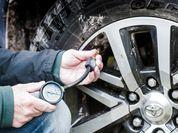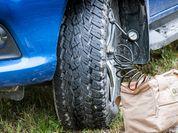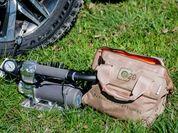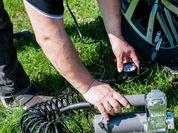
Jeepers reveal the secrets of tire pressure control
At the height of summer, it's time to get into the car and go on a trip: to see the world, so to speak, and show yourself at the same time. But truly interesting and breathtaking places are rarely found near busy roads, and in order to gain impressions and take good photos, sometimes you have to go to the ground and shake off-road.
Therefore, in order to save your car, we recommend using simple tips from experienced jeepers.
Air games
The amount of atmosphere in the tires on which we drive on asphalt is not always suitable for driving a car on the ground. For example, if you drive down a rocky broken road, from which sharp rocks stick out, then the pressure in the tires is less than 2,5-3 bar and is fraught with a cut. Therefore, experienced "off-road fighters" recommend pumping up tires from the standard 2-2,2 bar to 2,5-3. In addition, a slightly pumped wheel rolls better on large obstacles, which means you will also increase the cross-country ability of your vehicle.
But if you move out onto a road that has become muddy after rain, or sand dunes, then here you need, on the contrary, to bleed the air from the “cylinders”. This method is universal and suitable for all types of wheeled vehicles. The physics is simple: when we lower the wheels, the tire contact area with the surface increases, which means that the grip becomes better, the ride is more comfortable and the suspension does not work for wear.
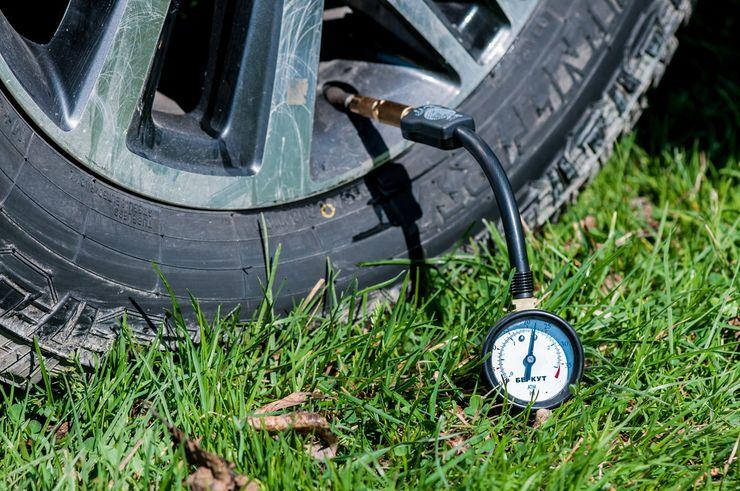
Unpack on the go
More specifically, when driving in the mud, it is best to bleed the tires to the 1 bar mark. For driving on sand, it is not a sin to blow off the wheels to 0,5 bar. True, you need to remember that at such a low pressure you can “take off your shoes” right on the go. To prevent this from happening, you need not to turn the steering wheel to extreme positions and prevent slipping.
Remember: low tire pressure means driving at low speeds - no more than 30 km / h. With more active driving, the likelihood of loss of control is high. In addition, it is not recommended to lower the tires too much when descending from a steep, because when braking, the tires themselves will continue to rotate, and the rims will be blocked.
Device to help you
Bleeding pressure "by eye" is a dangerous event, because the uneven amount of air in the tires negatively affects the handling and off-road capability of the car. The fact is that any car has a differential that redistributes torque between the wheels. The drive wheel, pumped up more, rotates easier, which means that the "diff" will give the lion's share of the motor's energy to it, and the car will pull to the side. In a muddy mess, this will immediately end with a landing on the bottom.
Therefore, it is best to use a pressure gauge to properly deflate tires. It is desirable that it be equipped with a special bleed valve (deflator), such as, for example, in the BERKUT ADG-031 high-precision pressure gauge, because then you can easily and quickly not only check, but also reset the tire pressure to the required values. By the way, this pressure gauge is in demand by professional jeepers, who, in order to improve the car's patency on marshy or loose soil, overcome obstacles on half-flat wheels. To regulate the pressure, you can also use the hose from the compressor, which also has a pressure gauge with a "deflator". After reducing the pressure, the difference in patency and comfort when driving on dirt roads and off-road is very noticeable.

This is a swindle
After you have overcome the off-road section and you have to return to the asphalt again, you need to return the tire pressure to its original state. And here the BERKUT off-road compressor will come to the rescue, which is equipped with an extension hose with a pressure gauge and a “deflator” for more precise adjustment of tire pressure. Thanks to its high performance, Berkut only needs a few minutes to pump up all the wheels of a car (even if it is an SUV) to the required atmospheres. A long twisted hose allows you to approach the wheels without dragging the compressor from place to place.
As advertising


